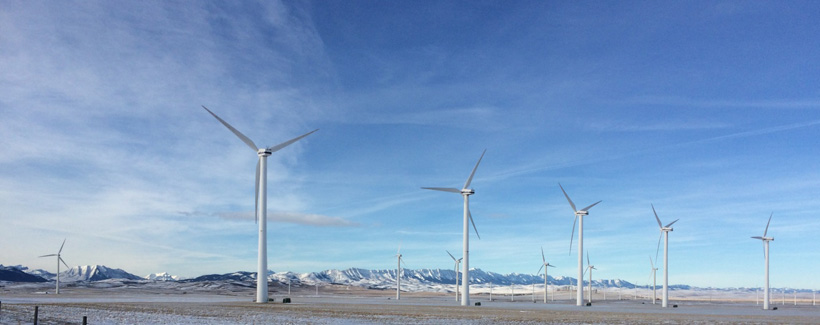Study from the University of Calgary shows how monitoring "Chinook" winds may help industry predict and prepare for large changes in wind energy output over short periods of time
From the Journal: Journal of Renewable and Sustainable Energy
WASHINGTON, D.C., MAY 12, 2015 — The Rocky Mountains certainly aren’t known for their mild winters. But in contrast to the upper Midwest, which seems to exist in a perpetually frozen state from November through March, the plains just east of the Rockies do get an occasional reprieve from the bitter cold: the Chinook winds. When these strong, warm winds blow, they can raise temperatures as much as 50 degrees Fahrenheit and melt away the snow — a welcome respite for residents sick of sweeping slick sidewalks and wearing puffy parkas.
But the Chinook winds receive a colder reception from wind energy forecasters, according to a University of Calgary study published this week in the Journal of Renewable and Sustainable Energy, from AIP Publishing. According to the study, these winds can precede large shifts in wind power output from wind farms — a challenge for companies seeking to provide a constant stream of green energy to consumers. By establishing a connection between local meteorological events and power grid output, the researchers hope that they may ultimately help grid operators more accurately predict fluctuations in flow and manage the grid accordingly.
The Chinook is the North American name for Föhn winds, which occur in mountainous regions around the globe. They blow down the leeward side of large mountain ranges when dry air descends from aloft, warming and increasing in wind speed while moving down the slope.
One of the greatest challenges to implementing wind energy on a massive scale is the unpredictability of its driving force. Wind comes and goes, frequently shifting speed and direction, and mountainous terrain makes it even more fickle. And yet, customers depending on wind power as their primary source of electricity demand a consistent flow — not one that dies with the wind. Thus, the success of wind energy depends, in part, on the ability to predict changes in wind flow and adjust the grid accordingly.

“Wind-power ramps need to be managed appropriately by the electrical grid operators to ensure security of supply,” said Michael Sherry, who carried out the study with David Rival.
The University of Calgary duo focused on wind-power ramps — large changes in energy output over a relatively short period of time caused by sustained and substantial wind speed shifts. They analyzed two years of wind-speed data from an Alberta field site located on the plains just east of the Canadian Rockies, where numerous wind turbines have been installed.
They found that wind-power ramps occurred even when Chinook winds were not blowing, suggesting a “complex relationship with local weather,” said Sherry. For instance, changes in temperature over the course of the day also impacted power-ramp frequency, with ramp-up events occurring most often shortly before solar noon as temperatures rose.
However, when Sherry and Rival examined the largest wind-power ramps, those with a change in power greater than 50 percent in less than 4 hours, they found a clearer connection.
“Large wind-power ramps occurred on days when a Chinook wind was present over 50 percent of the time,” said Sherry. That is, when the Chinook wind is blowing, electrical grid operators should prepare for potential changes in power output.
Because Föhn winds occur around the world, and the plains at the base of mountain ranges are a particularly popular spot to install wind turbines, the researchers hope that their findings will help wind power grid operators to better manage their energy supply. In the future, they plan to investigate the turbulence properties of Föhn winds in order to more fully understand the impact on wind energy production.
###
For More Information:
Jason Socrates Bardi
+1 240-535-4954
jbardi@aip.org
@jasonbardi
Article Title
Meteorological phenomena associated with wind-power ramps downwind of mountainous terrain
Authors
M. Sherry and D. Rival
Author Affiliations
University of Calgary in Alberta and Queen’s University in Kingston, Ontario
